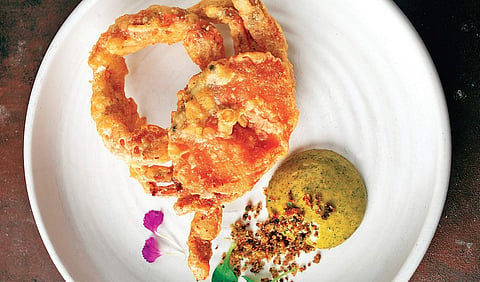

India did not have seafood restaurants till Imran Khan discovered Trishna in Kala Ghoda, Mumbai, thanks to his SoBo (South Bombay) 'Page 3' fan club. Before that there were restaurants which were popular for fish dishes but they were not billed as 'seafood' places. In Mumbai, oddly, many of them were called 'lunch homes'. That was presumably because they were located in office and mill areas, frequented by the working-class workers for fish and rice lunches. In the evenings, some would turn into local bars (or 'permit rooms' after prohibition was eased out in Maharashtra) where fish, usually in fried form, would go well as snacks with drinks.
Mahesh Lunch Home was one such restaurant on Pherozeshah Mehta (PM) Road in the Fort area of Mumbai that we frequented in the eighties. There were others in the vicinity like Bharat Lunch Home (later rechristened Excellensea) and Karnataka Lunch Home (Fountain Inn). Most of these places were Konkani, Malvani or Mangalorean and served their local cuisine of fish gassi, mutton or chicken sukka and fried fish. At Mahesh, we could eat a good lunch at less than a hundred rupees for two with a couple of London Pilsners thrown in. “Matrebhoomi Lunch Home” was a little further south towards Kala Ghoda. As per Mumbai’s jungle lore, it shut down in the eighties after some 'untoward incident'. It reopened in the early nineties in a new avatar as Trishna and a new genre of Indian seafood was born, which also took the cuisine to an international price league that friends of Imran Khan could afford.
It may be argued that the signature Butter Garlic Crab is as much an invention of Trishna as Nelson Wang’s Vegetable Manchurian. I believe that to be true for several reasons. First, the jumbo crabs and lobsters that one gets at Trishna and its clones are the deep sea variety and not what was available in the traditional Mangalorean, Konkani or Malvani eateries. The latter served smaller crustaceans found closer to the coast and caught in the nets of local fishing boats. The Trishna crabs and lobsters are more reminiscent of the Sri Lankan female crabs one gets at Newton’s Hawker Centre or East Coast Park restaurants. Trishna, in fact, borrowed the practice of bringing a live crab to the table for selection by the customer, from Oriental and Western seafood restaurants overseas. Hence, the method of preparation is different from gussi or curries. The live crab is dunked in boiling water and then the sauce is poured over the cooked meat. Using melted Amul butter and chopped garlic is indeed an Indian innovation.
But crabs are not necessarily an affluent person’s meal not just in India but across the world. The tastiest Indian crabs are in fact the 'mud crabs' found in paddy fields, mangrove and brackish water basins. Chilika Lake in Odisha -- the second largest coastal lagoon in the world -- has some of the best crabs. The blue swimming, coral and spotted shelled crabs found on the Kerala coast with long serrated claws are equally delicious. But, all of those are cooked in more earthy and rustic style with heavy use of spices. Though the recipes vary between regions, almost all -- with the exception, perhaps, of the Konkan and Mangalorean coast -- are high on fire quotient. This is probably because the village folk, for whom it is often a seasonal delicacy, consume it with large quantities of rice to complement the small amount of meat in the cooked shells and claws. Besides, given the hot weather, crab meat spoils easily unlike in colder climates where it can be had with minimal cooking. This is also true for countries like Thailand and Vietnam - where crabs are common in rice fields and inland waterways. But, that’s hardcore village food in monsoons -- out of reach for city dwellers like us.
The closest to the Singapore Crab one still gets is at the Ling's Pavilion in Mumbai's Colaba. The Singapore sauce itself is a Sino-Indian concoction that uses curry powder and a touch of turmeric. The brain and roe of the female crab melted in the gravy gives the sauce a magical taste, which can only be enjoyed when scooped up with Chinese steamed buns.
Read all food columns by Sandip Ghose here
(Sandip Ghose is an author and current affairs commentator. He tweets @SandipGhose.)